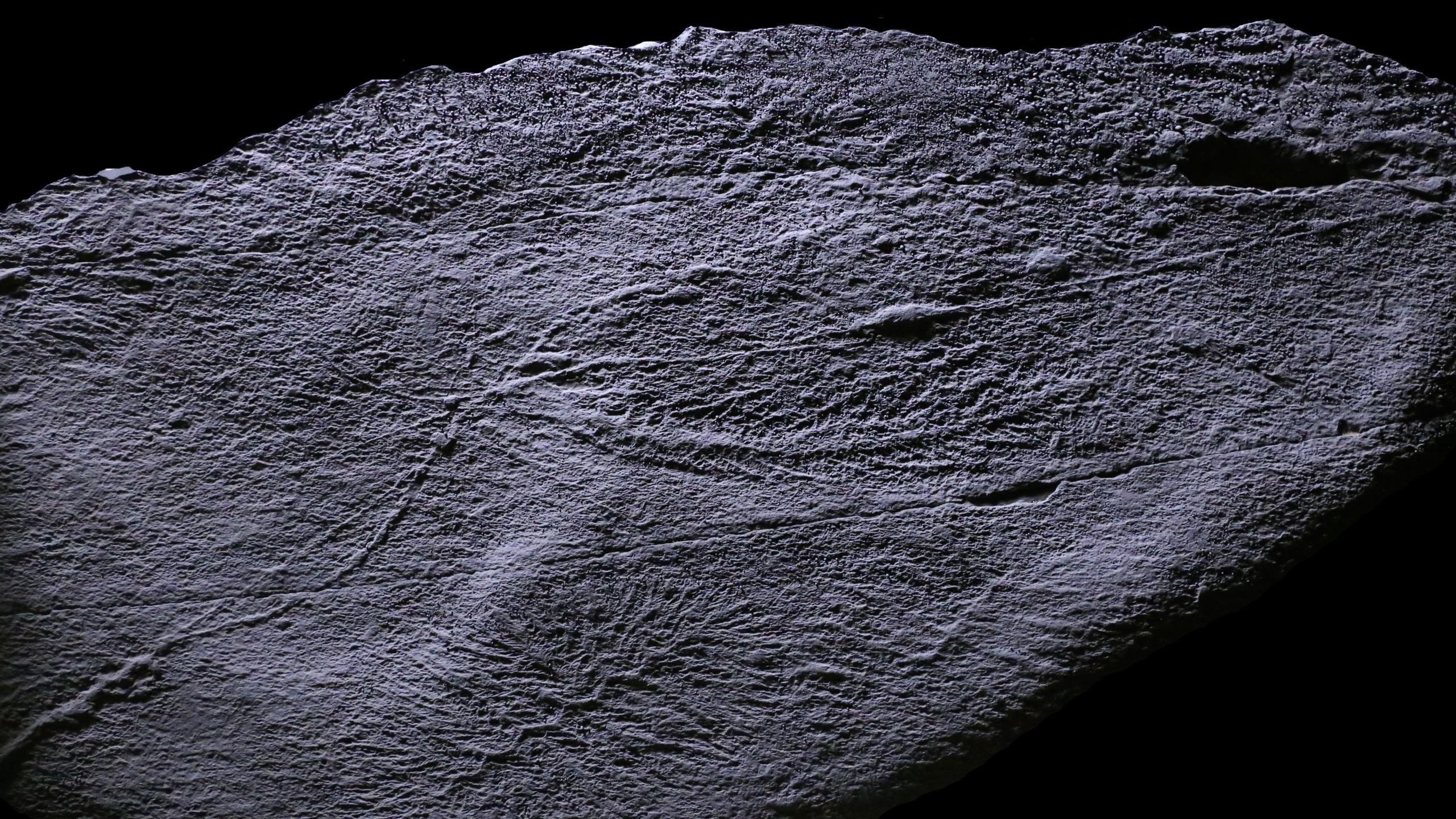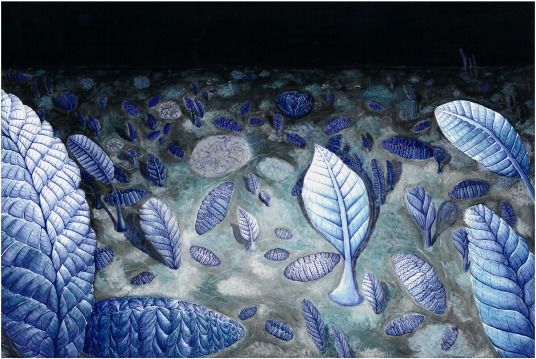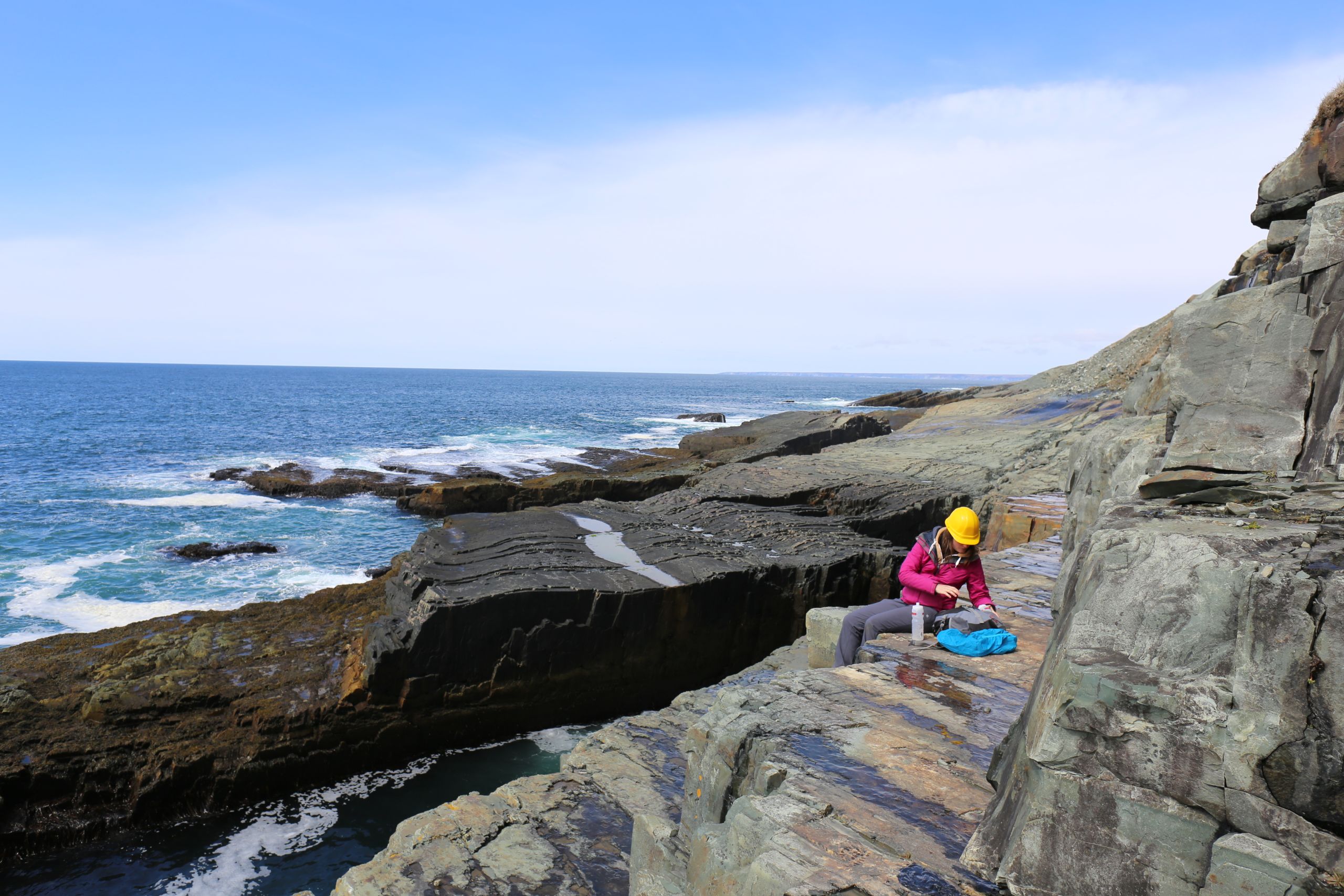Half billion-year-old ‘social network’ observed in early animals

Some of the first animals on Earth were connected by networks of thread-like filaments, the earliest evidence yet found of life being connected in this way.
Scientists from the Universities of Cambridge and Oxford discovered the fossilised threads – some as long as four metres – connecting organisms known as rangeomorphs, which dominated Earth’s oceans half a billion years ago.
The team found these filament networks – which may have been used for nutrition, communication or reproduction –in seven species across nearly 40 different fossil sites in Newfoundland, Canada. Their results are reported in the journal Current Biology.

Towards the end of the Ediacaran period, between 571 and 541 million years ago, the first diverse communities of large and complex organisms began to appear: prior to this, almost all life on Earth had been microscopic in size.
Fern-like rangeomorphs were some of the most successful life forms during this period, growing up to two metres in height and colonising large areas of the sea floor. Rangeomorphs may have been some of the first animals to exist, although their strange anatomies have puzzled palaeontologists for years; these organisms do not appear to have had mouths, organs or means of moving. One suggestion is that they absorbed nutrients from the water around them.
Since rangeomorphs could not move and are preserved where they lived, it is possible to analyse whole populations from the fossil record. Earlier studies of rangeomorphs have looked at how these organisms managed to reproduce and be so successful in their time.
“These organisms seem to have been able to quickly colonise the sea floor, and we often see one dominant species on these fossil beds,” said Dr Alex Liu from Cambridge’s Department of Earth Sciences, and the paper’s first author. “How this happens ecologically has been a longstanding question – these filaments may explain how they were able to do that.”
Most of the filaments were between two and 40 centimetres in length, although some were as long as four metres. Since they are so thin however, the filaments are only visible in places where the fossil preservation is exceptionally good, which is one of the reasons they were not identified sooner. The fossils for this study were found on five sites in eastern Newfoundland, one of the world’s richest sources of Ediacaran fossils.
It’s possible that the filaments were used as a form of clonal reproduction, like modern strawberries, but since the organisms in the network were the same size, the filaments may have had other functions. For example, the filaments may have provided stability against strong ocean currents. Another possibility is that they enabled organisms to share nutrients, a prehistoric version of the ‘wood wide web’ observed in modern-day trees. What is known however, is that some reconsideration of how Ediacaran organisms lived may be in order.

“We’ve always looked at these organisms as individuals, but we’ve now found that several individual members of the same species can be linked by these filaments, like a real-life social network,” said Liu. “We may now need to reassess earlier studies into how these organisms interacted, and particularly how they competed for space and resources on the ocean floor. The most unexpected thing for me is the realisation that these things are connected. I’ve been looking at them for over a decade, and this has been a real surprise.”
“It’s incredible the level of detail that can be preserved on these ancient sea floors; some of these filaments are only a tenth of a millimetre wide,” said co-author Dr Frankie Dunn from the Oxford University Museum of Natural History. “Just like if you went down the beach today, with these fossils, it’s a case of the more you look, the more you see.”
The research was funded in part by the Natural Environment Research Council (NERC) and National Geographic.
Reference:
Alexander G. Liu and Frances S. Dunn. ‘Filamentous connections between Ediacaran fronds.’ Current Biology (2020). DOI: 10.1016/j.cub.2020.01.052
All images by Alex Liu, except for illustration by Charlotte Kenchington.

